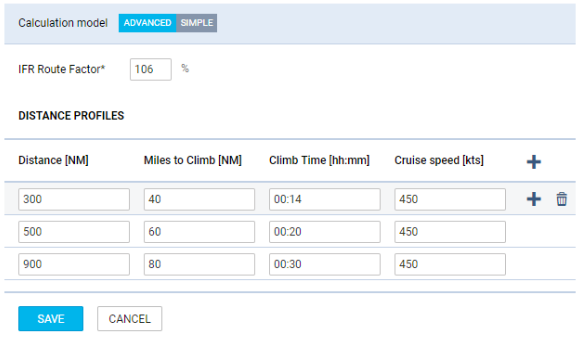Calculate Fleet’s arrivals precisely with new Performance settings
We can’t stress how greatly aircraft performance calculations can affect operator’s daily routine. Correct data input, when setting up the fleet in Leon, is also a great starting point on your way to optimise several processes within your organisation, from OPS to Sales.

Most recently we have revamped the fleet configuration in Leon to make it more transparent and in line with our developments in other areas. One of the biggest improvements though came with the new aircraft performance model that calculates arrival times on all trips of the particular aircraft in database.
Accurate and versatile flight time calculations
As we have kept the previous calculation model (currently available under “simple” tab), we have also introduced a completely new solution, providing more advanced and accurate estimations. Simple calculations, in which you specify aircraft’s speed per hour of the flight, can still be quite relevant, especially for long haul flights. In reality though, depending on the travelling distance and due to fuel efficiency issues, cruising altitude will vary significantly, affecting the flight route and flight speed of an aircraft. This also requires creating different performance profiles for different travelling distances.
Because of that, our advanced performance calculations have to incorporate a few more factors, such as a different distance to reach the cruising altitude (Miles to Climb) and the time needed to ascend to the desired altitude (Climb Time). For each distance profile there are distinct differences between those variables, as shorter flights usually take place on lower altitudes and have much shorter climb times. As flight routes are only rarely set in a completely direct line between ADEP and ADES points, we also include an additional variable in form of IFR Route Factor. Furthermore, it is possible to differentiate cruise speed for each profile.
Using a short example, we can create a number of different distance profiles for each tail. Profiles should describe the lowest possible travelling distance for the particular machine as well as additional distance thresholds. Leon will now calculate the performance on a basis of data from the appropriate distance profile.

There are certain benefits of this performance calculation change in Leon. It results, most importantly, in a higher accuracy of STA calculations. Sales representatives using Leon for managing charter quotations will also enjoy a much more accurate tool for their pricing purposes.
For more information on our current fleet performance model, don’t forget to check the Leon Online Wiki.
Should you require any assistance with setting up your fleet in Leon, performance-wise or not, feel free to contact our amazing Support team.
TAGGED WITH



